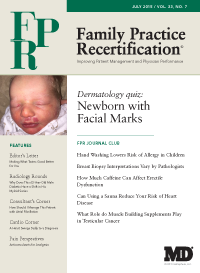Publication
Article
Making What Tastes Good Better For You
Author(s):
"If it tastes good, it must be bad for you" is an adage frequently espoused by mothers everywhere in efforts to influence what their children eat. Chocolate, ice cream, bacon, cheeseburgers, and French fries are just some of the foods I remember, which would evoke such a sentiment expressed by my mother during childhood.
“If it tastes good, it must be bad for you” is an adage frequently espoused by mothers everywhere in efforts to influence what their children eat. Chocolate, ice cream, bacon, cheeseburgers, and French fries are just some of the foods I remember, which would evoke such a sentiment expressed by my mother during childhood.
Nevertheless, despite her admonitions, these remain favorite foods of mine although I do practice restraint in consuming them on “special occasions” and in moderation. Although fully cognizant of their limitations in nutritional value and the dietary risk they pose towards the development of obesity and cardiovascular disease, suffice it to say I would fight tooth-and-nail against any movement to ban their consumption.
Despite being a staunch supporter of the freedom of “eats” and an opponent of overzealous albeit well-intentioned attempts on the part of the “food police” to dictate what people can and cannot eat, I find myself in full support of the decision of the Food and Drug Administration (FDA) in June to completely eliminate artificial trans fats from the American diet by banning food manufacturers and restaurants from using it in their products. The FDA ruled that trans fats are “not generally recognized as safe” for use in human foods and has given food manufacturers 3 years to remove all trans fats from their products.
Trans fats are artificial ingredients used in cooking and baking to make goods keep longer. They also make French fries crispier, frosting creamier, pie crusts more flaky, and cookies and crackers crunchier.
Foods containing this byproduct of partially hydrogenated oils include stick margarines, biscuits, pastries, cookies, crackers, icings, refrigerated dough products, and deep-fried foods at restaurants. The downside of trans fats, however, outweighs its value in enhancing the taste and texture of foods.
Trans fatty acids are low in nutritional value and a source of excess calories. In addition, trans fats raise LDL cholesterol, lower HDL cholesterol, and foster vascular inflammation. As a result, consumption of trans fat is an important risk factor for the development of heart attack, stroke, and diabetes. In fact, trans fat is felt to be responsible for an estimated 20,000 heart attacks and 7,000 coronary deaths in the U.S. each year.
Although one might argue that bacon and cheeseburgers are just as detrimental to one’s health, the difference lies in the stealth nature of trans fats. No one really consumes trans fats by choice.
Rather, its consumption occurs for the most part under the radar and unbeknownst to the consumer. Unless banned by local governments or by states like New York and California, restaurants and bakeries simply add or use it in preparing foods ordered by their patrons.
In 2003, the FDA ordered food manufacturers to disclose on their labels the amount of trans fats in their products. Although this prompted many food makers to voluntarily reduce or stop using this ingredient in their products, trans fat continues to be found in a significant portion of our food (particularly fried foods, cookies, baked goods, cakes, pie crust, popcorn, and ice cream). Food manufacturers are naturally reluctant to the trumpet the trans fat in their product, and instead obscure its presence among the laundry list of other ingredients in their package labeling under the name “partially hydrogenated oil”.
“Freedom of choice” requires the subjects making the decision be fully aware of the pros and cons of what they choose or choose not to do. The consumption of trans fats lacks such transparency and too often is the unintended consequence of eating a food item for which the average American consumer is wholly unaware of the ingredients used in its preparation. From the perspective of the public trust, I applaud the FDA for taking the initiative to protect the public from having to deal with an ingredient hidden in the food supply which may “taste good” but is otherwise “bad” for you.






